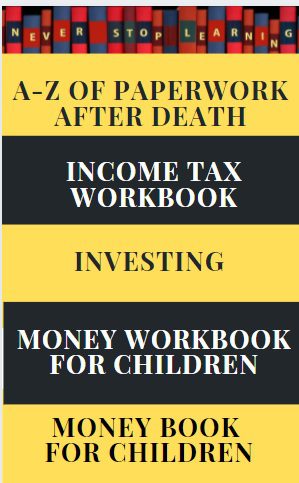Over the years, India has had more than its fair share of Ponzi and multi-level marketing schemes such as Rose Valley, Saradha, IMA Scam, Stock Guru, and Speak Asia. Thousands of investors have lost their hard-earned money by investing in such schemes. Ponzi schemes promise high returns or payouts, they keep their word(initially) to trap the first set of victims, then many people join to keep the fund flow ticking. Similar to Ponzi Schemes are Multi-Level Schemes or Pyramid schemes where early subscribers bring in other friends and family members. On 24 Jul 2019, Lok Sabha passed the Banning of Unregulated Deposit Schemes Bill 2019, which seeks to tackle the problem of unlawful Ponzi schemes exploiting vulnerable people. What is Ponzi Scheme? How it is different from Multi-Level Schemes? Let us also look at Examples of Ponzi Schemes, of Charles Ponzi, Bernard Madoff Scam of 2008 and scams in India, like Speak Asia, Stock Guru, Emu Farming.
There are no free lunches, no easy money. Yet people often become victim of ‘double-your-money’ or ‘earn-lifetime-income’ schemes.
The best way to double your money is to fold it in half and keep it in your pocket
Table of Contents
What is a Ponzi Scheme?
A Ponzi scheme is one that promises high returns to investors, but which does not have a legitimate business backing. Old investors are paid using the money generated from new investors, and the scheme can only last as long as there are more and more investors willing to put in their money. There may or may not be a business of product or service sales involved in the programme. Then when many people join, it is unable to keep the returns. It essentially means taking money from Rahul to pay the duped Pavn till the cover is blown
The name Ponzi scheme came from Charles Ponzi who defrauded hundreds with such a scheme as far back as the 1920s. Ponzi duped thousands of people into investing in postage stamps.
Example of Ponzi Scheme: IMA Scam in 2019 in Karnataka
40,000 investors, mostly Muslims in Bangalore, have lost funds to the tune of Rs 1000 crores in the Bangalore based IMA which unravelled as Ponzi Scheme in Jun 2019. An investment scheme that appeared to follow Islamic precepts, run by a religious man Mohammed Mansoor Khan, gave returns for years until it suddenly stopped. RBI had raised warnings against IMA in 2016 but they were ignored. Mohammed Mansoor Khan named politicians and developers as being benefactors of his largesse. He held them responsible for ruining his business.
Established in 2006 IMA hit the big time around 2015 and managed to thrive despite warnings against its fraudulent schemes from the RBI, income tax investigations.
In 13 years, thousands of investors, mostly Muslims, had invested in IMA Jewels with the assurance of high returns.
- IMA invited customers to invest money in multiples of Rs 50,000. Every month, investors were paid 1-3% of their investment and he could withdraw his principal anytime, after a 45-day notice.
- To attract investments from Muslims, who are forbidden by Islam to accept interest, he said this was a halal investment, returns would be from the profits his company made by trading in gold, silver and jewellery.
- Investors were ‘partners’ and didn’t get ‘interest’ but a share in ‘profit.’ At its peak, IMA doled out a monthly ‘profit’ of 7%. All payments were by cheque, increasing trust.
- He got Muslim priests to talk about his scheme.
- He was seen with politicians. In fact, in 2015 he even adopted a government school in Shivajinagar and renovated it at a reported cost of Rs 16 crore. The renovated building was inaugurated in June 2017 by the then Karnataka chief minister Siddaramaiah, Roshan Baig and then education minister Tanveer Sait.
- Trouble for investors started from March 2019 when payouts shrank or halted; the company claimed polls had created a liquidity crunch
- In Jun 2019, people got an audio clip from owner Mohammed Mansoor Khan saying that he is committing suicide.
- Khan escaped to Dubai but Special Investigation Team (SIT) in Karnataka convinced him to return to India.
Details in the article Understanding IMA Scam, Mohammed Mansoor Khan
Characteristics of a Ponzi scheme
Though technology has increased the reach of such schemes, the basic concepts remain the same, used in the 1880s by Sarah Howe and 1920s by Ponzi. The key characteristics of a Ponzi scheme are the following,
• A promise of high returns at zero risk
• There may or may not be the sale/purchase of a product or service associated with the programme;
• The advertised business is often a cover than something to generate serious profit for a sustainable activity
• There is a consistent flow of returns in the initial period that helps boost public confidence in the scheme
• The company keeps on marketing involving religious leaders, film personalities, to keep adding new subscribers to the scheme so that the older ones could be paid;
• By their very nature, Ponzi schemes will eventually bottom out because a point will be reached when no more new members are available in a community to join the scheme. And then they cannot pay to the investors. It falls off like house of cards.
How long can a Ponzi scheme survive?
As long as he keeps bringing money in and convincing people that he is good he can potentially run the scheme forever, all while getting filthy rich.
- 2 investors give a Ponzi schemer Rs 100 each on the promise that he will give them Rs 200 each in a month. He takes their money.
- So he has to find 4 people in the 2nd month to give him Rs 100 each to pay the first 2 investors.
- In 3rd months he needs 8 people.
- In 4th month he has to find 16 people to give him Rs 100 each on the same promise.
- In 10th he needs 1024 new investors
- In 18th month he needs 250000 new investors.
The other alternative is to convince people to reinvest. Eventually, though he’ll run out of people willing to give you money, in which case the scheme ends, or the people he owes money to all want it at once and he doesn’t have enough to cover it. In either event, the scheme is over.
Pyramid Schemes or Multi-level marketing(MLM)
An MLM, or pyramid selling scheme, typically requires you to pay upfront charges for either joining the scheme or buying a product or service (like collector’s items or software, training programmes, e-zine etc). Then they ask you to get more investors. As more and more people join the MLM scheme, a member hopes to recover the upfront charges and then earn sizable profit through binary income.
Difference between Ponzi Scheme and MLM Scheme
Many people associate Ponzi schemes with pyramid schemes or Multi-level marketing(MLM). Pyramid schemes are schemes in which the purported profits are generated from the subscription amount of newer members. While they do share some similarities, they’re not exactly the same.
Ponzi schemer will only ask you to invest in something. You won’t be asked to take any more action than handing over money. He or she will claim to take care of the rest and give you your returns later. The Ponzi schemer is the mastermind behind the whole system and is always shuffling money from one place to another.
A pyramid schemer will offer you an opportunity to recruit more people to join the scheme.
YouTube Video on Ponzi Scheme, Pyramid Scheme and the difference
Banning of Unregulated Deposit Schemes Bill
On 24 July 2019, Lok Sabha passed the Banning of Unregulated Deposit Schemes Bill, 2019, which seeks to tackle the problem of unlawful Ponzi schemes exploiting vulnerable people. It shall be deemed to have come into force on the 21st day of February 2019. The bill will replace the ordinance promulgated on February 21, 2019, which will otherwise cease to operate after six weeks after reassembly of Parliament.
The government aims to ensure that the menace of Ponzi schemes in society is nipped in the bud with this new legislation.
- The bill contains provisions to penalise those running illegal deposit schemes with imprisonment of between 1 to 10 years, and fines ranging from Rs 2 lakh to Rs 50 crore.
- The bill also includes a mechanism to ensure that depositors whose money had been taken are justly compensated; the same would be done in a timely fashion by attaching properties and other assets belonging to the defaulting entities
Example of Ponzi Scheme in US: Bernard Madoff in 2008
Bernard Madoff, the former NASDAQ Chairman, founded the Wall Street firm Bernard L. Madoff Investment Securities LLC in 1960 and was its chairman until his arrest in 2008. He conned billionaires and celebrities such as Zsa Zsa Gabor, Kevin Bacon and Steven Spielberg, individual investors, banks and even charities lost money in the scheme. In what he described as a Ponzi scheme, it’s estimated he took his investors for a cool $65 billion over the course of nearly two decades. He passed away in jail in Apr 2021
Bernie Madoff after 30 some off years on Wall Street had built himself a reputation. He helped design and implement the modern market as we know it. He came to be known as a financial genius and market guru who could read the charts, chart the trends, and outpace the market every time. So people who wanted higher returns on money went to Bernie Madoff. His rule was “If you liquidate, you liquidate all of it, and when you are out, you are out for good”.
He sent his investors a statement every month about how much money they had with him as well as the various investments and how much in gains they had made to-date with him. All of that was bogus. The reality is that their money was already gone, used to pay old investors, to pay employees, to pay for Madoff’s lifestyle.
Bernie’s Ponzi scheme unravelled when the financial crisis of 2008 hit. Many Investors wanted to redeem their investments as they needed money. So when the first couple of investors that came to him he cashed out, no problem. He had the money then. But eventually, he was out of money.
To save his life. He turned himself in. Or, rather his sons turned him in. Alerted by his sons, federal authorities arrested Madoff on December 11, 2008. Then Bernard Madoff revealed that the asset management arm of his firm, Bernard L. Madoff Investment Securities, was “just one big lie”.
On March 12, 2009, Madoff pleaded guilty to 11 federal crimes. On June 29, 2009, he was sentenced to 150 years in prison with restitution of $170 billion
The U.S. Securities and Exchange Commission (SEC) has been criticized for not investigating Madoff more thoroughly. Questions about his firm were raised as early as 1999.
Harry M. Markopolos an American former securities industry executive and independent forensic accounting and financial fraud investigator. He discovered evidence over nine years suggesting that Bernard Madoff’s wealth management business was actually a massive Ponzi scheme. In 2000, 2001, and 2005, Markopolos alerted the U.S. Securities and Exchange Commission (SEC) of the fraud, supplying supporting documents, but each time, the SEC ignored him or only gave his evidence a cursory investigation
Related Articles:
There’s a sucker born every minute. The gullible continue to fall prey to fraudsters, seemingly doomed to ignore or forget the financial scandals and cautionary tales of the past Awareness is the first level of defence against such scams. Take the projections of companies with a pinch of salt. At the very basic level, the fantastic returns promised by the fraudsters should serve as a red flag for investors. It is virtually impossible to churn out 10-20% returns every month/year. Check whether the scheme is approved by the regulator. Have you/someone you know been duped by such get the rich quick scheme?







Thanks for sharing this helpful content…